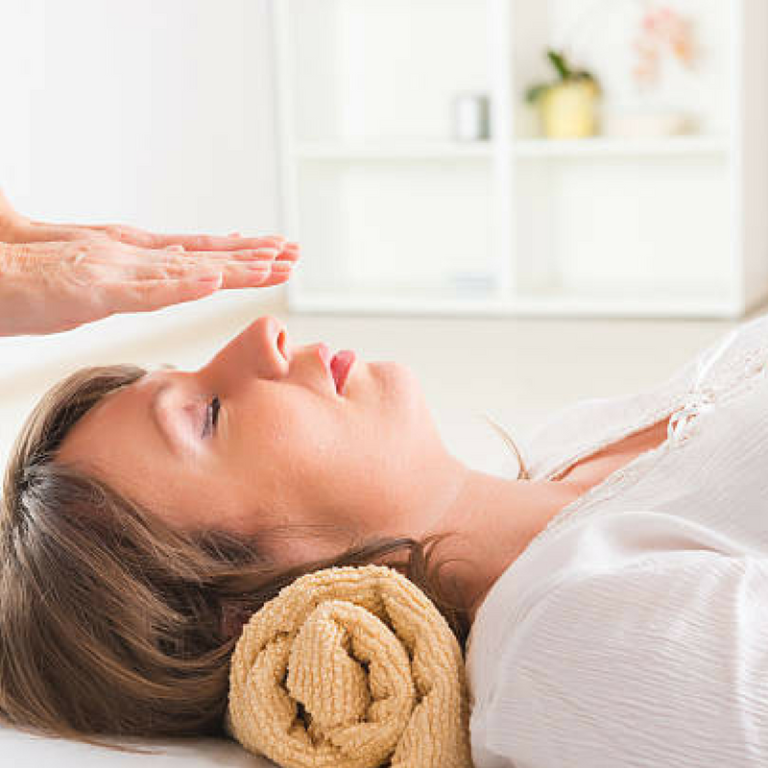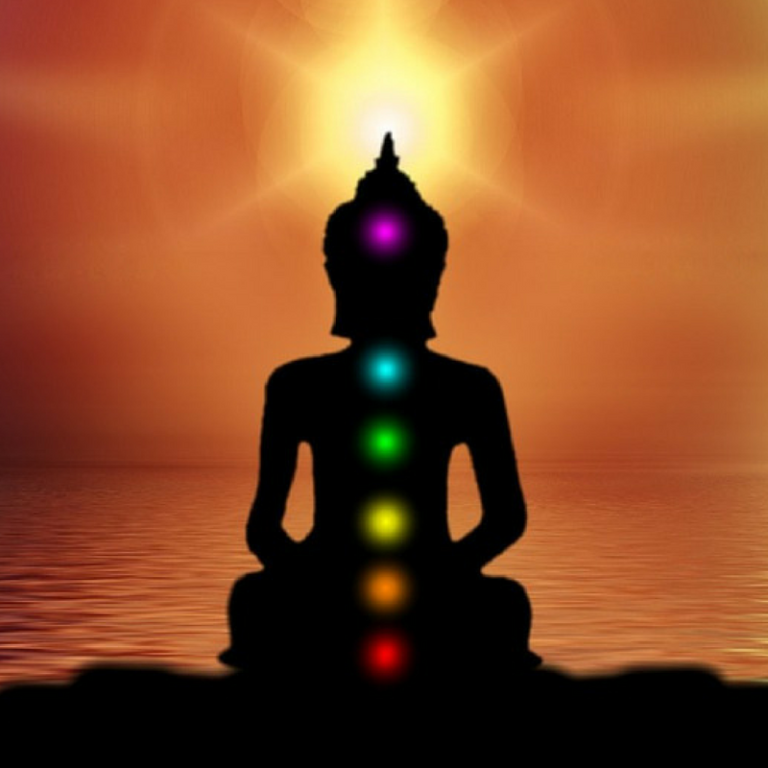REIKI
Energy Healing For The Mind, Body & Soul

Let Me Assist Your Healing Through Reiki
I work individually with clients to set an intention for our time together during their Reiki session. The private setting allows each client the opportunity to fully engage in learning about themselves. My favorite part of what I do is the “light bulb” moments when a students feel something or realizes something new about themselves.
I became extremely interested in Reiki after I felt its healthy, positive effects in my own being during a difficult and stressful time in my life. I embraced and studied the art of Reiki and I am attuned at the Master Level.


Reiki Energy Healing as a Compliment to Therapy
Reiki is a Japanese technique for stress reduction and relaxation that promotes healing. It is administered by “laying on hands” and is based on the idea that an unseen “life force energy” flows through us and is what causes us to be alive. If one’s “life force energy” is low, then we are more likely to get sick or feel stress, and if it is high, we are more capable of being healthy and well adjusted.
Reiki is a simple, natural and safe method of spiritual healing and self-improvement that everyone can use. It has been effective in helping virtually every known illness and malady and always has a beneficial effect. It works in conjunction with all other medical or therapeutic techniques to relieve side effects and promote recovery.
According to Eastern medicine, life energy or ki flows through the body. When this energy is compromised in some capacity, it hinders well-being. The goal of Reiki is to allow the body to be at its optimal condition for life energy to flow freely, thereby affording the opportunity for natural healing properties to occur in the body. The natural healing mechanism is promoted by helping the client to obtain a relaxed state through the laying on of hands or distance treatment and channeling the energy to the client.
Records of Reiki’s use are growing as Western medicine seeks ways to provide care in a holistic manner. Reiki is currently being offered not only for management of physical pain but emotional pain as well. According to a survey conducted by Health Forum, a subsidiary of the American Hospital Association, 42 percent of the responding hospitals in the United States and 70 percent of the responding hospitals in Canada offer complementary and alternative treatments including Reiki and healing touch. Reiki is used in the treatment of anxiety, depression, trauma, stress and memory loss, as well as in palliative and oncological care.
Reiki is offered in hospitals, clinics and hospice settings. For example, the Integrative Medicine Department of Memorial Sloan Kettering Hospital offers and teaches Reiki to patients and caregivers. In a 2010 study conducted by Yale University and published in the Journal of the American College of Cardiology, researchers Rachel Friedman, Matthew Burg, Pamela Miles, Forrester Lee and Rachel Lampert found that 20 minutes of Reiki significantly improved mood and variable heart rate following a heart attack. This was above and beyond control for other variables.
Chakra Balancing With Reiki
A chakra is an energy center in the human body as taught in Indian yoga and some related cultures. Chakra means ‘wheel’ in Sanskrit.
A chakra is an area in the body connected with life energy. There are seven chakras in the body – each is an interface for the flow of life energy. A chakra vitalizes a physical body and is associated with interactions of a physical or mental nature. Current science is not able to detect or measure chakras. The seven main chakras are described as being present in an ascending column from the base of the spine to the head. The chakras are usually connected with a certain color. Each chakra is also connected with some part of consciousness.
- Root chakra (Muladhara)
- Navel chakra (Swadhisthana)
- Solar plexus chakra (Manipura)
- Heart chakra (Anahata)
- Throat chakra (Vishuddha)
- Third eye chakra (Ajna)
- Crown chakra (Sahasrara)
The foundation to a healthy system consists in opening and balancing the chakras in order to create a sustainable, harmonious flow of energy.

REIKI FAQs
What is Reiki?
Reiki is a Japanese technique for using Universal Life Energy used in for the purposes of promoting relaxation, balance, stress reduction and healing. It is regarded as a form of alternative medicine also called energy healing. This healing energy can only be channeled by a practitioner who has been attuned to it. Reiki is considered to be a complementary health practice designed to enhance other forms of treatment. It can easily be blended to work with psychotherapy.
How can Reiki help me with depression or anxiety?
Reiki energy addresses the four bodies of individuals; physical, emotional, mental, and spiritual. All four of these levels are intertwined and affect all aspects of life. One purpose of Reiki healing is to promote balance within the individual. This balance often manifests as relaxation which enables the individual to better cope with extreme emotional states, including depression and anxiety and provides an enhanced sense of well-being.
Can Reiki help me with trauma?
Trauma impacts an individual on multiple levels and harms the physical, emotional, mental, and spiritual bodies. As Reiki energy addresses issues on all of these levels, it can be beneficial in the healing from traumatic experiences. Reiki provides a gentle healing space where emotional blocks can be released safely while supporting the body’s natural healing abilities. Reiki promotes relaxation and stress reduction which directly contradict some of the primary symptoms of trauma, specifically the ongoing fight-flight-freeze response.
What does Reiki feel like?
The sensations experienced during a Reiki session vary by individual but common ones include heat, tingling, vibration, or buzzing. Some people report “feeling” nothing during the session but later report positive changes. Often a Reiki practioner’s hands become very warm as they channel the Reiki energy. This can be felt through hands being lightly placed on the individual’s body or even from a distance when physical touch is not being used. The sensations do not indicate the level of how well the Reiki is “working”. It is simply how individuals’ bodies sense energy.
Do you have to touch me to do Reiki with me?
While physical touch is not required to use Reiki energy healing, it can be beneficial to the healing process. During a Reiki session, the practitioner uses a series of light hand placements on the individual’s body (head, arms, legs, torso). These hand placements are standard but can be tailored to the comfort of the individual receiving the Reiki energy. Touch is never used on private areas such as breasts and genitals. The Reiki practitioner should always check in with the individual regarding their comfort level and respect this during the treatment session.
I see some people use a massage table for Reiki, do I have to lay on a table?
The massage table used by Reiki practitioners is not mandatory but can aid in physical comfort as the individual can lay in one position more easily and relax more fully during the Reiki session. The table also allows the Reiki practitioner to move freely around the individual without asking them to move which can disrupt the calmness of the healing process. Depending on space and physical ability, Reiki can also be done with the individual seated on a chair. At Cardinal Point we use a reclining chair that lays as far back as you are comfortable with. The chair is very supportive which allows you to feel supported and safe.
Will I have my clothes on?
Reiki is always performed clothed, although the individual will likely be asked to remove their shoes. The only skin contact experienced during Reiki energy healing is where clothing is not covering the body such as the head or arms and legs depending on if the individual is wearing short sleeves, shorts, etc. No private body parts are ever touched during a Reiki session. It is suggested that the individual wear clothing that is comfortable as they will be laying or sitting in the same position for the length of the session.
Is Reiki a form of religion?
Reiki is not a form of religion. Reiki is the Universal Life Energy that flows through all living things. Due to this, it can be considered spiritual in nature but has no religious beliefs or suggestions attached to it. Much like how Reiki is considered to be a complementary health practice, some people have found it to compliment their own religious paths. However, this is based on personal belief only. The practice of Reiki is to promote healing.




